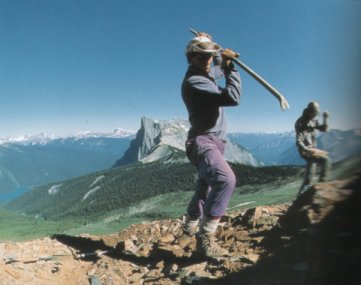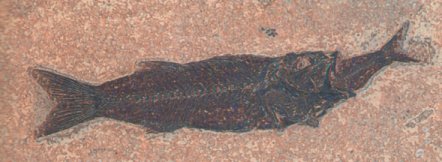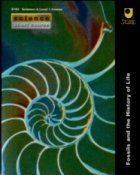
S193 Fossils and the History of Life
Started 16th November 2002
The Palaeontological Association
Museum of Paleontology, University of California, Berkeley
American Museum of Natural History
Smithsonian Paleobiology Department
The Natural History Museum
The Yoho-Burgess Shale Foundation
Yoho National Park (Field)
Prehistoric America
Parapatus Paleontology Page
A Guide to the Order of Trilobites
What are Trilobites
Trilobites and their Evolution through Time
The Virtual Silurian Reef
BBC Essential Guide to Rocks
The Virtual Fossil Museum
Astrobiology Web
Scientific American.com
National Geographic News
ScienceNet
DinoData
Arthropoda
Brachiopoda
Comatulid Crinoid Pages
Paleontology of Cephalopoda
Bivalvia
Gastropoda
Graptolites
Bryozoans
Introduction to Porifera
Introduction to Microfossils
(All Sorts of) Earth History
The Dawn of Animal Life
The Tree of Life
Back to OU
As I had just completed the S260 Geology course, fossils were kind of fresh in my mind - and, as I wish to study S292 - The Emergence of Humans, at the end of 2003, I thought this course would be an excellent introduction to evolution. Either that or I just couldn't bear to be spending 3 months doing only maths!
S193 Diary
22nd March 2003
Result received this morning. 92%. I'm very happy with that! :)
8th January 2003
Today I sent off my CMA, so have now *officially* finished the course. Won't get the result until around the end of March.
1st December 2002
I've finished the course! I've read both books and have completed the assignment (although I haven't actually transferred it to the CMA form). I did rush it a little more than I had hoped to, but still enjoyed it very much. I wish that I were doing the "Explaining the Emergence of Humans" course now; straight after - it certainly is a most interesting subject. Hopefully, when I have more time, I will write more on this page about the course. In the meantime, I would recommend it to anybody!
26th November 2002
Despite not doing much in the way of knuckling down over the past week, I seem to have arrived at the end of the Mesozoic, with only the short Cenozoic section and 4 CME questions left to do! (I wonder when the earliest is that we can send it in?). It's all still very interesting, but I can't help feeling that it might've been even more so had I not been fussing around with S103 and S151 (ugh!) at the same time?
17th November 2002
Coming along grand and the interest quotient is never in danger of diminishing! Fabulous stuff! I have finished Parts 1-3 and am about to embark on "Life in the Mesozoic". I've done 15 of the CME questions - but here there is a bit of a quibble as it appears that the Exam Board can't make up their mind whether the pass mark should be 40% or 65% or somewhere in between! What on earth is all that about? Have to aim for 100% to be on the safe side! :)
Last evening, watched the video on "Lost Worlds" regarding mass extinctions - and of the opinion that, yes indeed, we are in the middle of what will go down in geological history as the "Sixth Extinction". The climate is changing without doubt; still there are roses on the bushes and passion flowers in bloom, in the middle of November! :)
I'm very interested in the "Cambrian Explosion" - or, more accurately, what went on before that "explosion" to enable such a mass of new critters to evolve. The Burgess Shale is definitely on my list of "ones to visit"!
Finding new life forms on the Burgess Shale - high up in the Rockies, BC, Canada. Must be a bummer of a job! :)
12th November 2002
How I love this course! I have made good progress already (I'm not rushing; I just love it!) and have finished the first 2 sections and answered the first 6 CME questions (one of the choices of which was very amusing - but as we're not allowed to publicise any of the OU's questions, I cannot mention it - although it was to do with fossils with 7 or 8 feet. :))
I have huge ambitions to include an Ediacara in with my collection (some hope!) and think that Bangiomorpha pubescens is a dream of a name for the first creatures to have sex!
11th November 2002
Greedy fishie! Died when attempting to swallow another fish - and has been like this for millions of years!
"Whoop, whoop"!! The course materials arrived this morning! Mega brill!! The coursebook itself is very interesting - but the Prehistoric Atlas is wonderful!! Four fossil replicas; trilobite, ammonite, crinoid and (I think) echinoid. Also *another* copy of the Digital Kit + a video and the usual bits and bobs (including the 2 CMEs from which you have to choose).
I spent a good part of the evening, sat upstairs, reading most of the first part of the book. You have to read bits from the Atlas as you go - and it's all extraordinarily fascinating (of course).Course Book Contents
7th November 2002
According to the (below) despatch page, the course materials were sent out yesterday - so, should get them by Saturday - or Monday, latest! Meantime, I will forge ahead with the maths course, the materials for which arrived this morning.
Course Materials Despatch
2nd November 2002
Despatch put back to 13th November??? C'mon peeps, get your act together!!
31st October 2002
Unfortunately, nothing to report - and yet am raring to go! VERY disappointingly, the course materials were due to be sent out 30th October, but, looking at the despatch page, this has now been changed to the 6th November. D'uh! The FC conference will be open from 9th November.
Understanding Fossils
Introduction
Getting into the fossil record
The classification and naming of fissils
Interpreting fossils as living organisms
Geological time and the dating of fossils
Reconstructing the past
Evolution and the fossil record
Summary
Early life on Earth
Life's long fuse to the Cambrian explosion
Summary
Life in the Palaeozoic
The Cambrian explosionThe Burgess ShaleThe Ordovician seas
An overview of animal phyla
The origin of the vertebrates
The Silurian Period and the invasion of the land
Life in the Silurian sea
The Devonian Period
Vertebrates move onto landAn outline of vertebrate evolutionAn outline of plant evolution
The Carboniferous coal forests
The Permian periodAncient mammal relativesExtinctions are foreverSearching for the causes of mass extinctions Extinction todaySummary
Life in the Mesozoic
The Triassic Period
Dinosaurs
Flying and marine reptiles
Early mammals
The Jurassic PeriodSolenhofen and ArchaeopteryxLife in the Jurassic seaSome other invertebrates in the Jurassic seaThe Cretateous Period
Cretateous lifeThe discovery of dinosaurs and the world of Iguanodon Cretaceous Park Cretaceous MarinaFlowering plants and their origins
Life in the late Cretaceous Chalk seaSome other life in the Chalk seaEnd of an era - the Cretaceous-Tertiary mass extinction
Summary
Life in the Cenozoic
The Early Tertiary
The radiation of the mammalsMammals of the AmericasThe mid Tertiary
MesselRiversleighThe emergence of humansThe first discoveries of early hominidsThe Quaternary Period
Summary
Perspective on the history of life
Collecting and studying fossils for yourself



